Do you need help determining the best time to harvest beets? Well, you are not alone.
In fact, it took us several seasons to figure out that there is more to beets than the roots.
As a result, you can harvest beet leaves as soon as they are 2 to 3 inches long and beetroots when they are slightly larger than a ping pong ball.
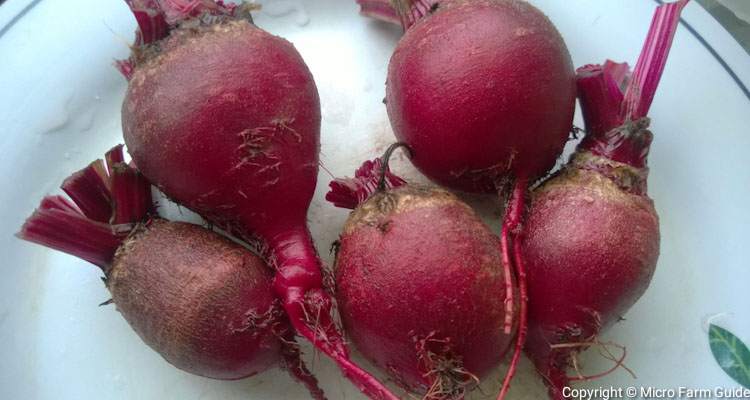
Needless to say, these baby beetroots can remain in the ground until they are much larger and should be harvested based on how you prepare them.
With that said, this article will take a closer look at beets and estimate times for harvest, including tips on planning your crop based on climate and storage options.
When Is The Best Time To Harvest Beets?
In short, the best time to harvest beets is roughly 2 months after you planted them when they are large enough to be seen above the surface of the soil.
In most cases, they’re usually at their best between June and October. Yet still, this can extend to the winter months in temperate regions.
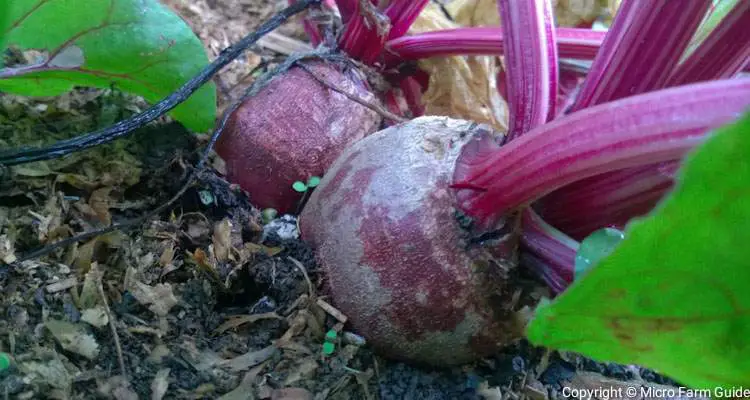
However, it’s possible to harvest beets twice because the leaves and roots can be harvested separately.
Depending on which parts of your beets you want to harvest, the optimal timing for harvesting might be different.
So, let’s look at the best time for harvesting beet greens and roots.
Best Time To Harvest Beet Greens (Leaves)
Beet greens should be harvested when they are between 2 and 3 inches in length and when they taste as fresh and flavorful as possible.
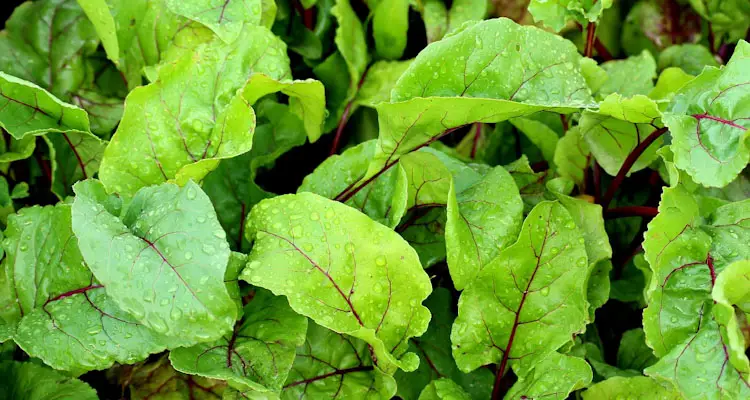
If you wait until the leaves grow longer, they will start to get tough and lose their flavor, and you’ll probably need to cook them rather than eat them raw.
However, when it comes to beetroots, you’ll need to be stricter with the timing, as we will see shortly.
When Is The Best Time To Harvest Beet Roots?
As mentioned earlier, beetroots are usually harvested roughly 2 months after planting. However, there are a few things to consider before you gather.
For example, you will need to consider how long you’ll be storing the beetroots, whether you’ll be cooking or peeling them, and whether your plan is to pickle or can your beets after harvesting them.
Baby Beet Roots
If you don’t want to have to peel your beets, it’s best to harvest the roots early, when they’re about the size of your average golf ball. At this stage, the beets will be tender and can be cooked with the skin on.
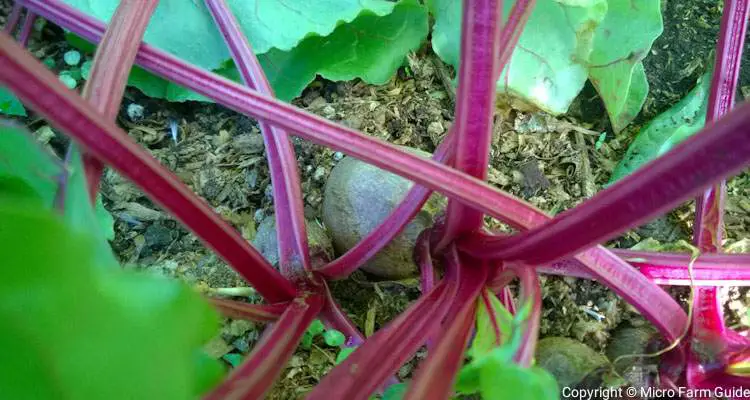
However, if you peel your beets (presumably so you can roast them), it’s best to wait until the beets are more mature before harvesting.
Mature Beet Roots
A rough estimate for when beets are ready for harvesting and roasting is when they’re about the size of a baseball.
If you wait too much longer than this, the texture will change to become pithier, and they won’t taste as good.
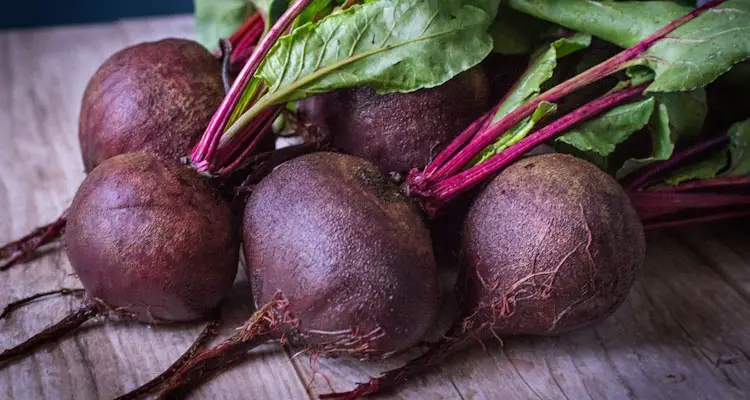
You’ll know when your beets are mature enough for peeling and roasting when the tops of the roots begin to peek out through the soil, making it easy to gauge their size.
Pickling Beet Roots
On the other hand, if you’re pickling your beets or storing them in cans after harvesting them, you have a bit more flexibility regarding picking time.
Once the beetroots are at least the size of an average ping pong ball, you can dig them up and pickle them.
Since pickling or canning beets make them softer and add more flavor, it doesn’t matter if they start to get a bit fibery as long as the flavors have had time to develop fully.
Do Storage Plans Affect Beet Harvests?
If you plan to consume your beet leaves or roots immediately, you don’t need to worry about the best harvesting method.
However, if you’re collecting a large harvest of beets for storage in the long term, you will need to harvest your beets when they have plump, firm roots with tough skin.
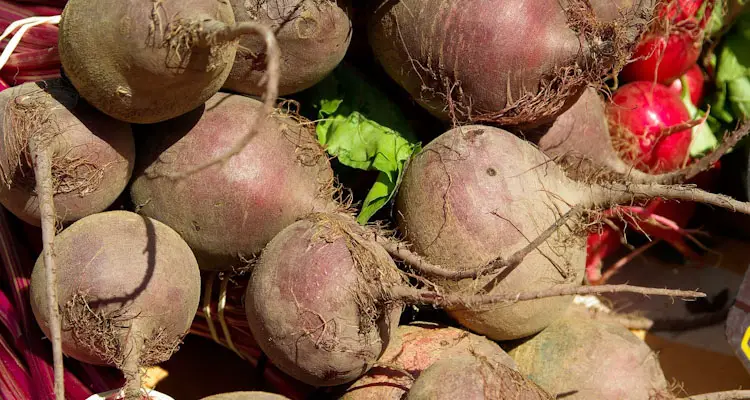
This will usually be when the beet shoulders become visible through the soil. The root should have roughly the same diameter as the average man’s fist.
You’ll want to avoid washing the beetroots after pulling them up if you aim to store them for a long time.
Cut off the greens close to the roots, but make sure you’re not cutting the actual tuber in the process. Don’t cut the skinny part protruding from the bottom of the root either, or the roots will lose moisture.
The best way to store your beetroots for a long time is to use an airtight plastic bag in the refrigerator, preferably in the crisper drawer.
If you have a basement, you could also store your roots in crates full of slightly moist sand. Ensure that the roots are not in contact with each other to prevent rot.
Final Thoughts
Beets are harvested depending on their intended purpose and choice of storage.
The leaves should be harvested when they are 2 and 3 inches long if you intend to eat them raw, but they can be picked at any point for cooking.
When it comes to the roots, the best time for harvesting depends on your preparation and storage plans.
Baby beetroots are best if you don’t want to peel or cook them, but larger, baseball-sized roots work better for roasting and long-term storage.
You can harvest beetroots for pickling or canned storage at any point once they’re bigger than a ping-pong ball.
References
West Virginia University. Growing Beets. extension.wvu.edu. Accessed October 2022
